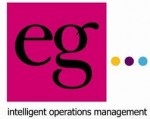Forecasting: don’t sing off the same spreadsheet Elizabeth Gooch, CEO, eg solutions
 Forecasting and planning is a business critical activity and increasingly important in doing business in bumpy economic times. But without a psychic sixth sense, the only way of forecasting variables from resources to workloads effectively and accurately is to leverage the operational intelligence within your business.
Forecasting and planning is a business critical activity and increasingly important in doing business in bumpy economic times. But without a psychic sixth sense, the only way of forecasting variables from resources to workloads effectively and accurately is to leverage the operational intelligence within your business.
Business leaders are right to want to do more with less and have confidence that they have sufficient resources to meet customer service standards; this is the magic formula that ensures businesses can increase profitability. But it is easier said than done. The strategies, tools and processes that make up workforce optimisation (WFO) – covering workforce management, performance management and quality assurance amongst others – are now in wider use by businesses of all sizes more than ever. Typically used within the front office, those employees and processes that are customer facing, such as sales or customer services – workforce optimisation has been able to transform the customer experience and enable functions such as contact centres to effectively plan for, predict – and of course, forecast – capacity and workflow, as well as automate many daily processes.
For the back office – that is those employees behind the coalface, where transactions are processed that are critical to delivering the customer experience but are often unseen by customers – it is a different story.
Forecasting for the front office is hardly a walk in the park, but it is a significantly bigger challenge to forecast for the back office. Firstly, not all work can be processed immediately – processes can be multi-stage workflows crossing multiple team boundaries and skill sets, with dependencies on one step being completed before another can start.
Secondly, unprocessed work in the back office does not simply ‘go away’ as it does in the front office. For instance, an abandoned call is just that, and requires no follow up. Back office tasks that are unprocessed will remain in a backlog, to be processed in addition to further work, often falling out of agreed service levels. Finally, the time required to process back office jobs start to finish can in reality take several hours or days rather than minutes, for instance, a mortgage application, a new life insurance policy, or complaints.
When talking about back office forecasting and who should own it within an organisation it is important to make the distinction between forecasting demand and supply. The drivers for operational demand – workload, resources and technology available within and to the business –need to be fully understood in their own right to form an accurate forecast. But who has the best capability within an organisation to deploy this?
There is some debate separating those who believe that forecasting should be handled by team leaders and those who believe that it should be handled centrally. A recent poll conducted by eg solutions asked over 100 back office professionals who they thought should own the responsibility for forecasting back office operations within an organisation. Three quarters (75 per cent) of those polled stated that a central/resourcing team should control forecasting. Only 8 per cent suggested that department team leaders and managers should lead forecasting, with the remaining 16 per cent indicating other departments such as ‘marketing’, or even ‘everyone’. This suggests that there is general recognition that owning forecasting centrally can supply greater analysis and overview of the business functions, rather than the people on the ground, with perhaps less of a higher level business view. The traditional methods of forecasting, which typically sees multiple teams working off scores of complex, inconsistent and bespoke spreadsheets is dead. Spreadsheets, used alone, are ineffective and require continual maintenance and updating.
To really and truly effectively forecast, algorithms together with historic work and resourcing data, need to be used in the correct way. Unfortunately, many now recognise that this function is too complicated for the non-technical team leaders and managers. A central system is clearly required, as highlighted by those polled. One that calculates this data for teams and presents it in a usable, actionable format and understands demand drivers as previously mentioned.
Understanding demand requires a central forecasting team to work closely with areas of the business that drive and influence demand (e.g. marketing or product managers) and those on the receiving end of the customer behaviour (operations, contact centres) – it is a collaborative activity.
When it comes to supply, all business units – whatever level of the organisation structure they sit within – work within certain limitations. These include such variables as how many individuals the department has available over a period of time, and how they are skilled in relation to the incoming work in the short term. With the addition of further considerations for service achievement and operational shrinkage, understanding future supply becomes as important as understanding demand.
The question of who should own a forecast may very well come down to an organisation’s view of who best understands these demand and supply factors, in and around other influences such as the size of an organisation and its maturity. Do these functions sit together or independently, owned centrally or locally? There is one school of thought that believes that these should be owned by a central function, as it helps to provide a consistent view of demand and supply across an organisation and takes into account factors such as volume and mix of work types. Centralisation also gives the ability to better co-ordinate sharing of resources across teams and departments.
It is clear to see that there is overwhelming support for forecasting to be centrally controlled. However, critical business issues such as forecasting will always differ from company to company. For some, having team leaders and managers scheduling and forecasting may work for now. However, this will not last. With advanced operational, business and management intelligence tools, and greater demands for business efficiency, reduced reliance on spreadsheets alone as an accurate forecasting tool is inevitable. Reducing dependency on forecasting efforts and on bespoke spreadsheets, and freeing up time for evaluative modelling and analysis rather than routine reporting will become the reality.




